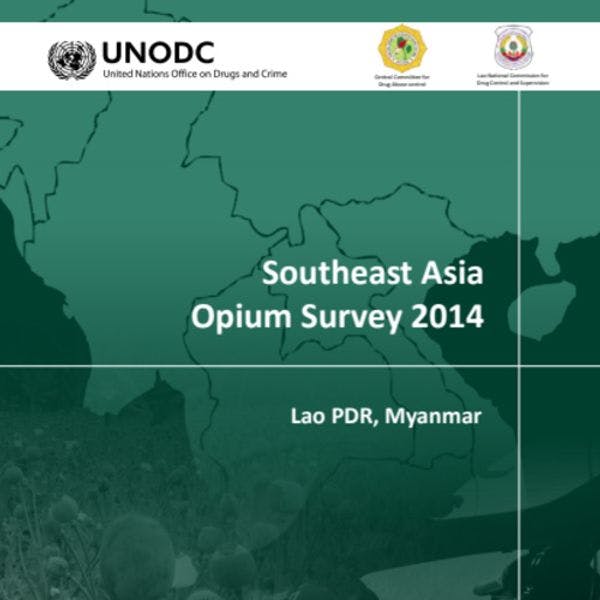Southeast Asia opium survey 2014
The roots of the opium production problem in Southeast Asia go back to the 19th century. The region is home to the “Golden Triangle”, an area long associated with opium and heroin production, located where the borders of Myanmar, Lao People’s Democratic Republic (Lao PDR) and Thailand converge along the Mekong River. Twenty years ago, the Golden Triangle was the largest heroin‐producing area in the world, supplying the region’s own demand as well as exporting its surplus to North‐east Asia, Europe and the United States of America. In the 1990s and early 2000s, national and regional efforts succeeded in reducing both opium production and trade in the region, though they subsequently increased.
UNODC started annual Opium Surveys in Lao PDR in 2000, and Myanmar in 2002, in order to measure trends in the cultivation of opium poppy and help formulate an effective response to it. The surveys undertaken from 2000 to 2006 underscored the fact that efforts to counter opium production had succeeded in eliminating much of the cultivation in the Golden Triangle, but more recent opium surveys have indicated a resurgence in production over the last few years. As the Southeast Asia region also continues to include high levels of demand, the large quantities of opium produced provide opportunities for transnational crime networks and pose a challenge to the stability and development of the region.
The Southeast Asia Opium Survey 2014 provides an overview of the latest available data on opium production in the Southeast Asia region. It serves as evidence that transnational organized crimes, such as the production and trafficking of drugs, can be a challenge to development and need to be prioritized by both the region itself and the
international community.
Keep up-to-date with drug policy developments by subscribing to the IDPC Monthly Alert.
Downloads
Regions
Related Profiles
- United Nations Office on Drugs and Crime (UNODC)
